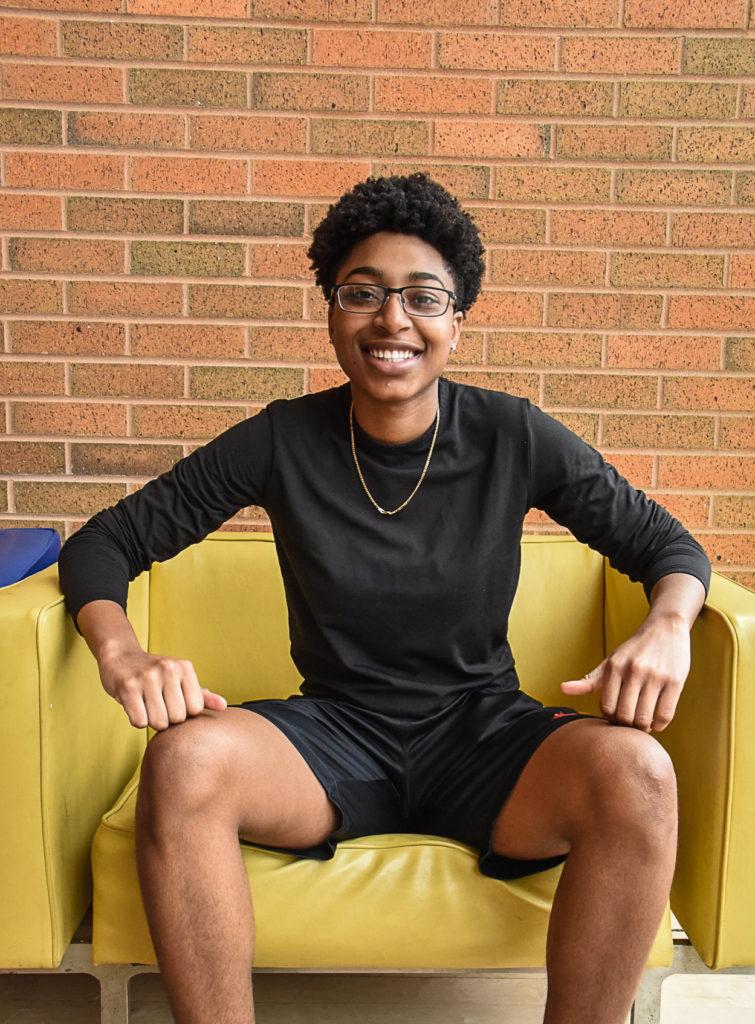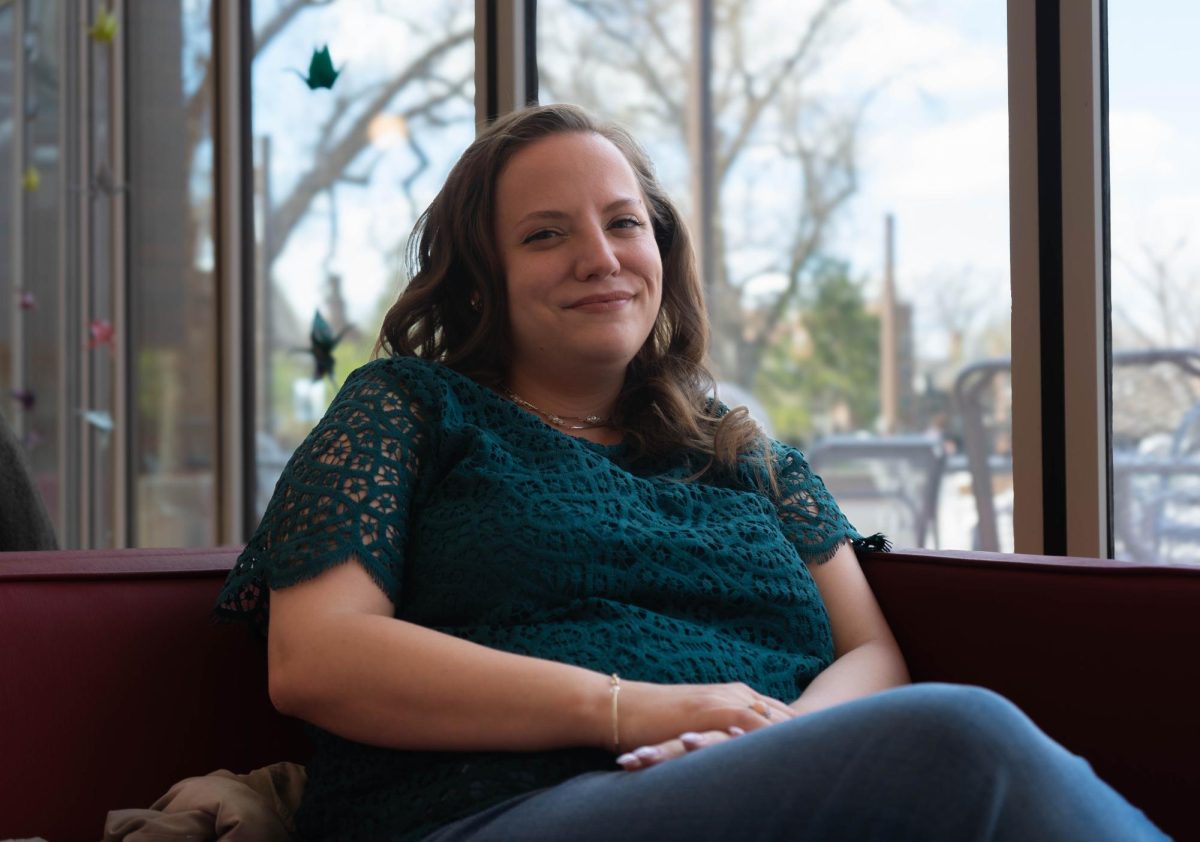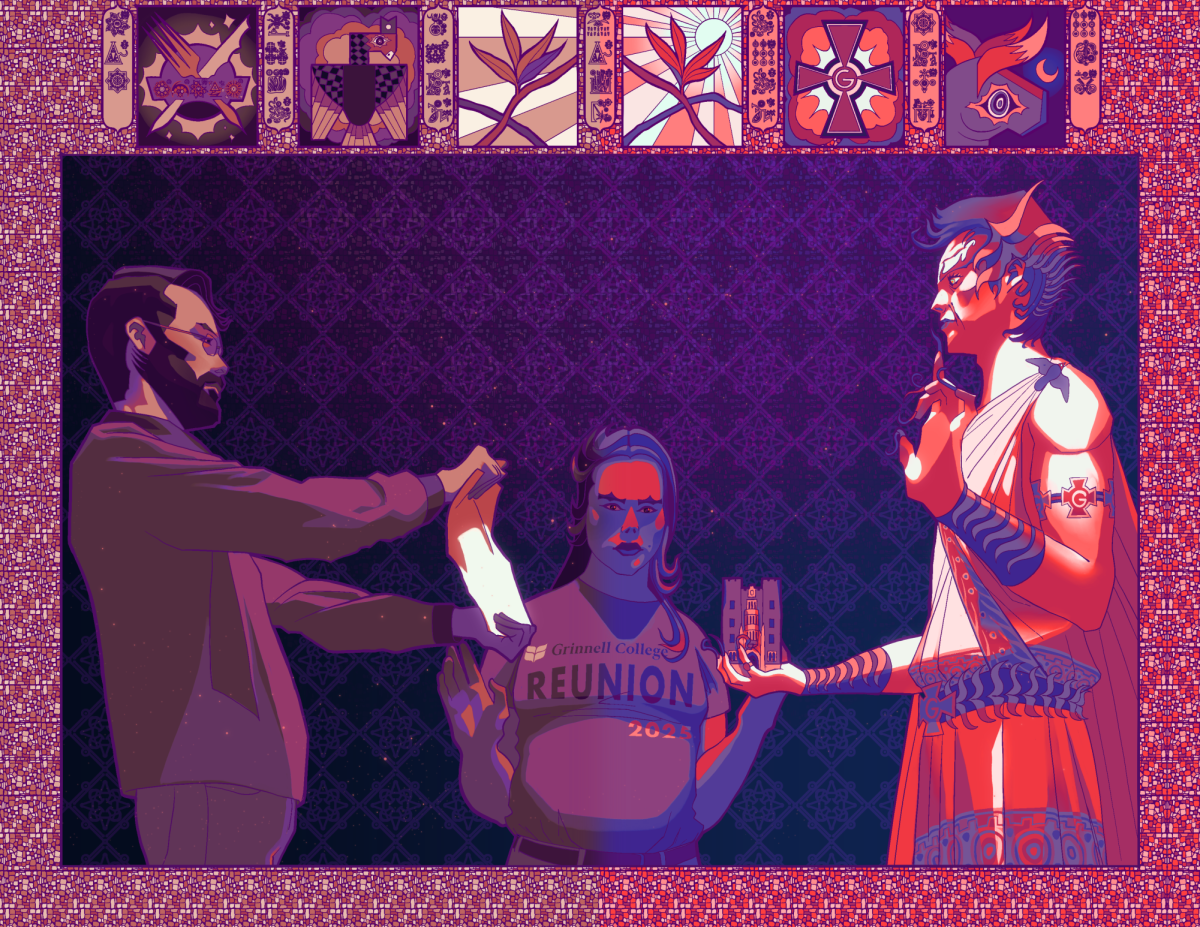The painting “American Progress” by George A. Crofutt depicts the march of white settlers to the western United States. It shows a white woman in a white, flowing dress floating over settlers marching forward in wagons. In the distance, Native Americans are seen running away.
To Grinnellians working on the Native Histories Project, which attempts to create lesson plans about Native Americans for secondary school students, this painting is emblematic of the problems with American historical narratives.
The Native Histories Project website includes a picture of “American Progress,” with the caption, “Who is ‘American’ in this view of ‘American Progress?’ This same Eurocentric story is what we often find in American History textbooks at the secondary-school level. Native peoples are forced to the periphery, not presented as central to the ‘American story.’ The Native Histories Project’s goal is to help teachers disrupt that distorted view. We assert that Native History is American History and should be integral to what we teach in our secondary schools.”
While working on Iowa-based teacher education, Professor Deborah Michaels of the Education Department originated the project in 2016 after connecting with Leah Slick-Driscoll, a Native American teacher at the Meskwaki Settlement School. Since then, several Grinnell College students have been involved in the project.
“[Native American History] is something that often gets overlooked, so we just make lesson plans that they can choose to use to teach students more about past Native American history or even current things that are going on right now,” said Gabby Gordon ’22, one of the students involved in the project.
Gordon took her tutorial with Professor Michaels, and Michaels invited her to join the project this past semester. Now, Gordon focuses on creating lesson plans about sports in Native American communities.
“I’m looking at the controversies around mascots,” she said. “Football, basketball and soccer, those are all things that are played within Native American communities, but there’s a disconnect – like after history we kind of forget about them, so the whole unit is [designed] to kind of bring [students] back to the idea that they’re still here.”
Additionally, Gordon will contribute to the Native Histories Project as a Vivero Fellow next year. Within the fellowship, Gordon will help maintain and develop the Native Histories Project website. Web presence is very important to the mission of the project.
Gordon said, “I think when you’re teaching history it’s important to integrate other parts of history, but when you check out textbooks that teachers have to use, it’s a lot harder or more difficult to change textbooks. But it’s a lot easier to design a website where a teacher can pull a lesson plan from. So maybe it’s a way of tackling a problem from another side. History textbooks don’t include everyone’s history, but we can put it up online to help teachers find easy ways to integrate that into the classroom.”
With the website, teachers can easily download lesson plans that are ready for them to immediately bring to the classroom.
As of right now, the project’s website includes units on Indian boarding schools, Latin American colonization, Native American identity and Native American slavery in Latin America, along with others, and students working on the project continue to create new content for the website.
A living, growing project with the potential to create positive change in the classroom, the Native History Project’s website says, “The curriculum is evolving, we welcome constructive feedback and suggestions for future units and lessons. We are especially eager to collaborate with Native American teachers, scholars, and students.”






















































